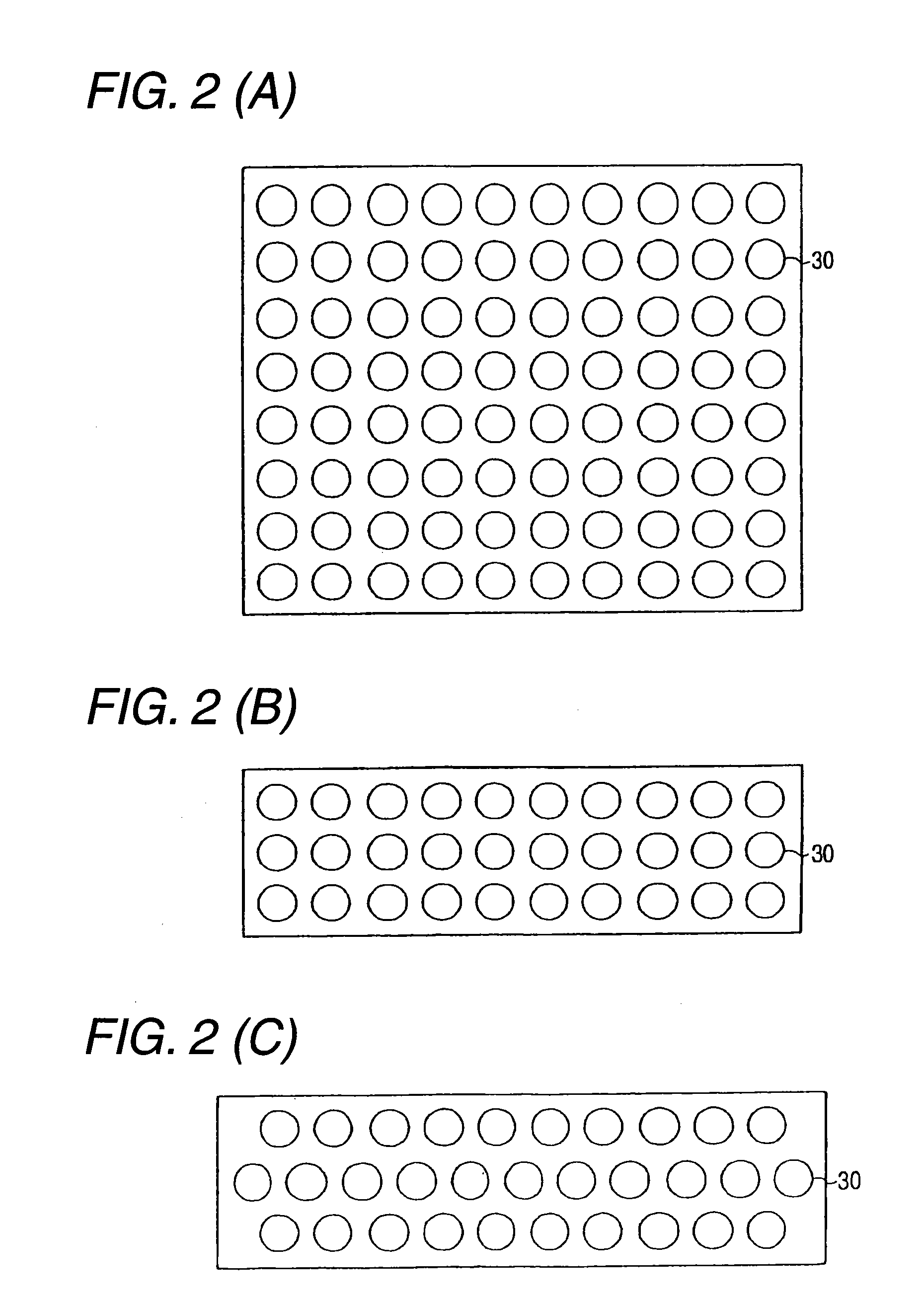Speaker Array Apparatus and Method for Setting Audio Beams of Speaker Array Apparatus
a speaker array and array technology, applied in the field of speaker array apparatus, can solve the problems of inability to obtain the correct angle of audio beams, the shape and installation place of the speaker array, and the inability to automatically set the audio beams of the speaker array apparatus in the room, etc., to achieve the effect of easy detection, short time, and easy reproduction
- Summary
- Abstract
- Description
- Claims
- Application Information
AI Technical Summary
Benefits of technology
Problems solved by technology
Method used
Image
Examples
Embodiment Construction
[0053]FIG. 1 is a block diagram showing the schematic configuration of a speaker array apparatus according to an embodiment of the present invention. FIG. 2 are views of layouts of speaker arrays, in which (A) shows the case where speakers are arrayed in a matrix, (B) shows the case where speakers are arrayed in three lines, and (C) shows the case where speakers are arrayed in three lines so that the speakers in the second line are displaced from the speakers in the first line and the speakers in the third line. The following description will be made about an example of a speaker array apparatus serving for a 5.1ch surround-sound system. In the following description, term a front left channel L(Left)ch, a front right channel R(Right)ch, a center channel C(Center)ch, a rear left channel SL(Surround Left)ch, a rear right channel SR(Surround Right)ch, and a subwoofer LFE(Low Frequency Effects)ch in the 5.1ch surround-sound system. In the 5.1ch surround-sound system, an audio signal of ...
PUM
 Login to View More
Login to View More Abstract
Description
Claims
Application Information
 Login to View More
Login to View More - R&D
- Intellectual Property
- Life Sciences
- Materials
- Tech Scout
- Unparalleled Data Quality
- Higher Quality Content
- 60% Fewer Hallucinations
Browse by: Latest US Patents, China's latest patents, Technical Efficacy Thesaurus, Application Domain, Technology Topic, Popular Technical Reports.
© 2025 PatSnap. All rights reserved.Legal|Privacy policy|Modern Slavery Act Transparency Statement|Sitemap|About US| Contact US: help@patsnap.com



